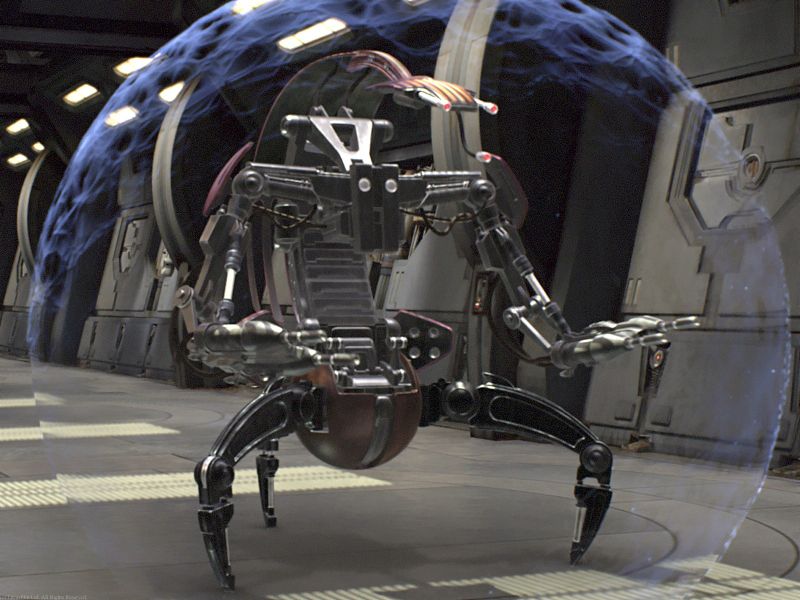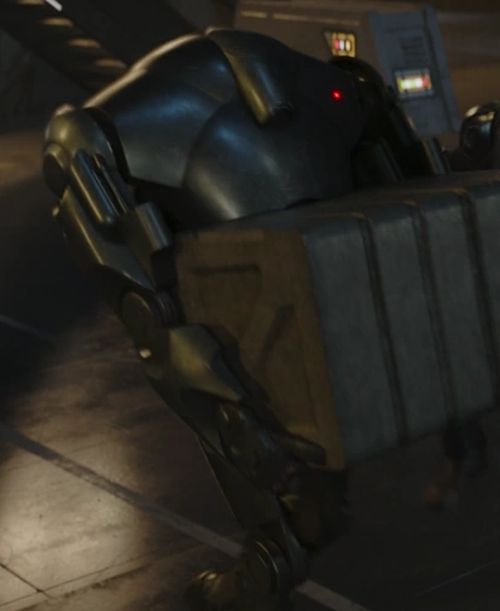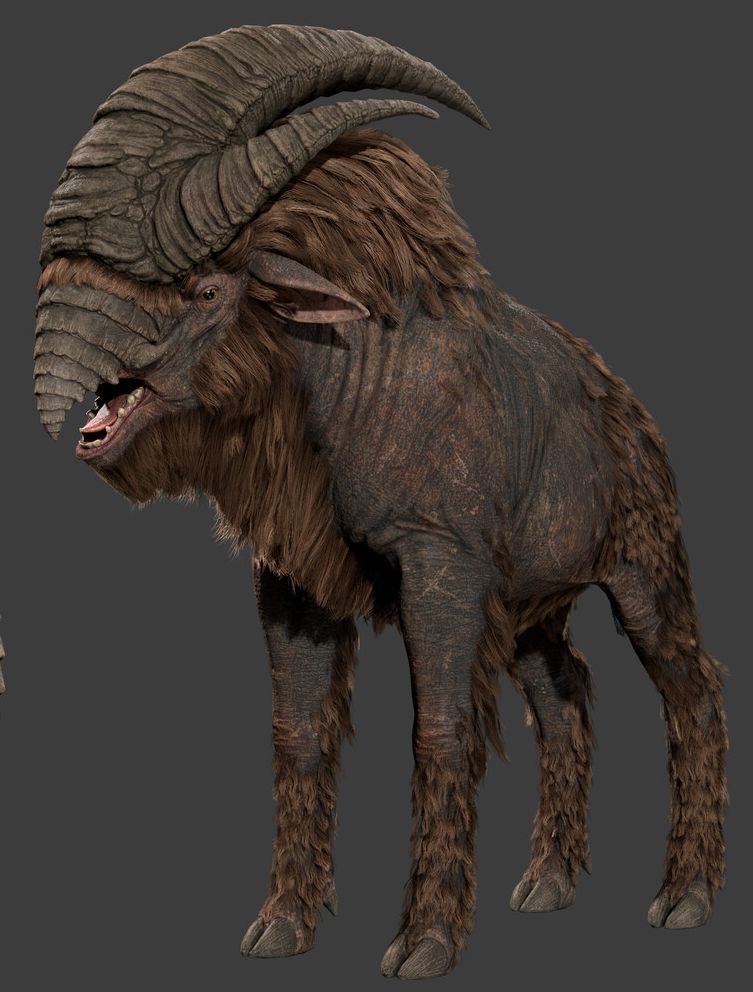 Name: Phlac-Arphocc Automata Industries Q-series droideka
Manufacturer: Phlac-Arphocc Automata Industries
Place of manufacture: Colla IV
Product line: Droideka series
Class: Battle droid
Height: 1.83 meters
Sensor color: Red
Dexterity: 2D
Blaster 7D, Dodge 5D
Knowledge: 1D
Mechanical: 1D
Perception: 1D
Search 3D
Strength: 3D
Technical: 1D
Equipped with:
Two twin built-in blaster cannons (Range 5-50/120/300, Damage 6D+2)
Two visual and two auditory sensors - Infra Red Vision
Sheild Generator (+2D, (due to power drain can only be used for 3 rounds if shield is in contact with physical object such as a wall))
Armoured Skin (+2D)
Rolling Motive System (Move 15, requires shield to be deactivated)
Move: 7
Description: The Q-series droideka was a model of destroyer droid employed by the Confederacy of Independent Systems. It was used mainly during the Clone Wars, and was produced by the Phlac-Arphocc Automata Industries. It served on various capital ships, such as the Invisible Hand. It also proved to be a lethal asset on the battlefield with its personal energy shield, but became vulnerable, like other droideka models, if rolling along on the battlefront, as their shield could not be activated during this time.
They were mainly used by the Trade Federation and the Confederacy of Independent Systems. The CIS were able to receive special discounts on these droids by bribing the carnivorous Colicoids, the creators of the droideka, with meat.
Characteristics
The Q-series droidekas were more formidable than the Trade Federation's many B1 battle droids for several reasons. They were able to transform into a wheel-like configuration, allowing rapid movement and compact storage. When they encountered their targets, the bronzium-armored droids would unfold into a tripodal weapons platform, equipped with powerful, built-in twin blasters and often personal shield generators. These shield generators could endure much punishment, and were capable of deflecting or absorbing any manner of firepower up to a light artillery bolt, as well as lightsaber blades and physical attacks, among other weaponry. Additionally, the effectiveness of these droids was bolstered by the lack of true photoreceptors; instead, droidekas utilized non-visual composite radiation sensors, less likely to be distracted by mere light-based trickery. Droideka dispensers were sometimes used as transport and dispense for these droids. They were capable of deploying droidekas right into a combat zone, and proved a nuisance to enemy troops for this reason.
This model of droideka was an upgrade of the W-series droideka. There were not very many differences in design, except for a shinier coating which was also a darker shade of red, as well as slightly increased firepower in the Q-series droideka. The new series also did not overheat as quickly as previous versions. A number of Q-series droidekas served aboard the Invisible Hand during the Battle of Coruscant. Two fired at Jedi Master Obi-Wan Kenobi and his former Padawan, Anakin Skywalker, on the ship, however, the two Jedi escaped by entering an elevator.
Design flaws
Despite being a very formidable droid, the droideka had one major design flaw. Its shield was designed to enclose the droideka in a standing position, but if the droid was to be knocked on its side or against a wall, the shield would have no way of distinguishing the wall or floor from a blaster rifle or lightsaber. This meant that the shield generator had to continue supplying energy to the shield, resulting in an overload, as demonstrated during the rescue on the Invisible Hand. The shorted-out shield generator would leave the droideka vulnerable. Also, in the rolling position, the droideka's shield could not be activated, leaving it vulnerable while rolling from place to place.They were made after the failed grappling droideka design.
Droidekas had a hard time maneuvering on downward slopes and climbing up stairs. In their rolling configuration, they would have to go back quite a bit and then speed up, launching themselves up the stairs. They could also try to traverse stairs in walking configuration, although it was extremely hard for them to coordinate their three legs on stairs.
Additionally, this droideka model, like the others, could not fire at targets in close proximity because its blasters were too far spread out.
History
The original design of this droideka was made by the insectoid Colicoids of Colla IV, who were displeased by the limitations of Baktoid Combat Automata's basic B1-Series battle droids, and chiefly manufactured there. The Confederacy of Independent Systems used trading in rare meats as a way to ease bargaining with the ravenously carnivorous Colicoids, and were able to get special rates on this normally very costly droid model.
Before the Federation's defeat after the Invasion of Naboo, the original droid model was usually slaved to a central computer. This technique fell out of favor in the aftermath when they would function independently as the B2 super battle droids did. However, the droidekas on Colla IV were not slaved to a central computer, making them independent. This made them much more expensive and deadlier.
The Q-series droidekas operated independently as well, which was another one of their assets. They, like most other droideka models before them, were able to operate without being slaved to a central computer.
During the early years of the Galactic Empire, many of these droidekas were used by Gizor Dellso in the Battle of Mustafar. All were destroyed when the Empire bombarded the planet.
|












